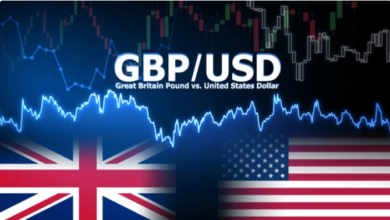- NZD/USD gains traction to near 0.5905 in Wednesday’s Asian session.
- China’s economy grew 5.4% YoY in Q1, stronger than expected.
- Vacillating US trade policies and Fed rate cut bets weigh on the US Dollar.
The NZD/USD pair holds positive ground around 0.5905 during the Asian trading hours on Wednesday. The Kiwi strengthens against the US Dollar (USD) after the upbeat Chinese economic data. Traders will shift their attention to the US March Retail Sales and the speech of Federal Reserve (Fed) Chair Jerome Powell on Wednesday.
Data released by the National Bureau of Statistics of China on Wednesday showed that China’s Gross Domestic Product (GDP) rate climbed 5.4% YoY in the first quarter (Q1), compared to an annual rate of 5.4% recorded in the final quarter of last year. This figure came in stronger than the market forecast of 5.1%. On a quarterly basis, the Chinese Gross Domestic Product (GDP) rate rose 1.2% in Q1 versus 1.6% in the previous quarter, missing the anticipated 1.4% print.
Meanwhile, the nation’s Retail Sales jumped by 5.9% YoY in March versus 4.0% prior and 4.2% expected. Industrial Production arrived at 7.7% YoY in March from 5.9% in February, above the market consensus of 5.6%. The New Zealand Dollar (NZD) attracts some buyers in an immediate reaction to stronger-than-expected Chinese economic data.
Trump raised additional tariffs to 84% on April 9 and has since increased that to 125%, bringing the total tariffs on Chinese goods exported to the US to 145%. On Monday, Trump said he was considering a modification to the 25% tariffs imposed on foreign auto and auto parts imports from Mexico, Canada and other nations.
The uncertainty surrounding Trump’s tariff policy and rising bets that a tariff-driven US economic slowdown might force the Federal Reserve (Fed) to cut interest rates more aggressively in 2025 could drag the Greenback lower and create a tailwind for the NZD/USD pair in the near term. The markets are now pricing in nearly 85 basis points (bps) worth of monetary policy easing by the end of the year, with most expecting the Fed to hold rates next month, according to the CME FedWatch tool.





